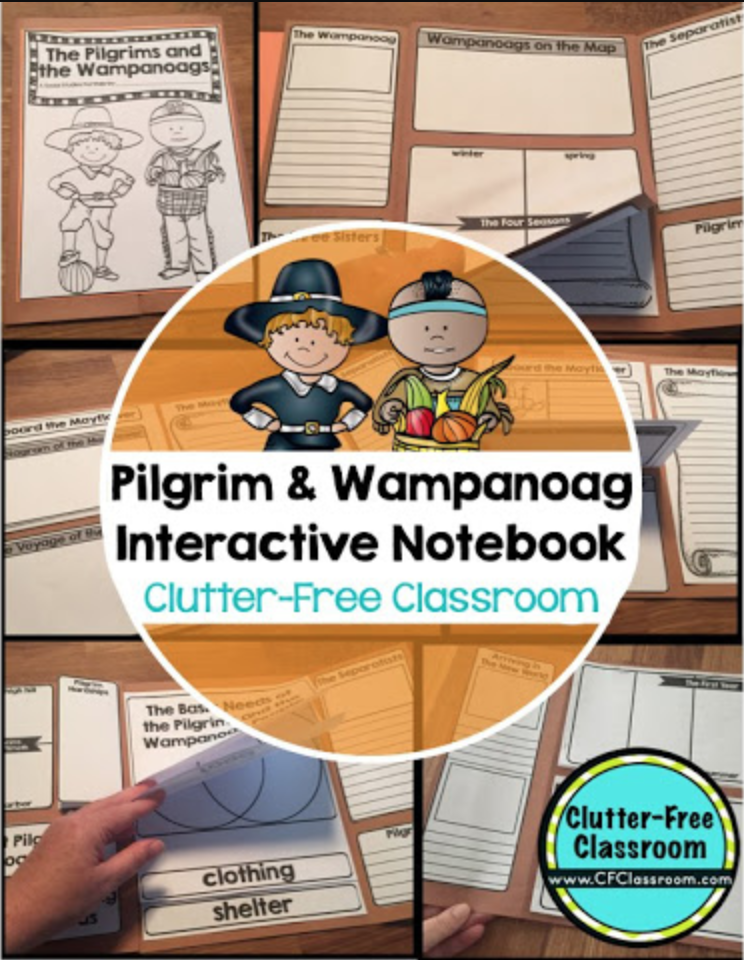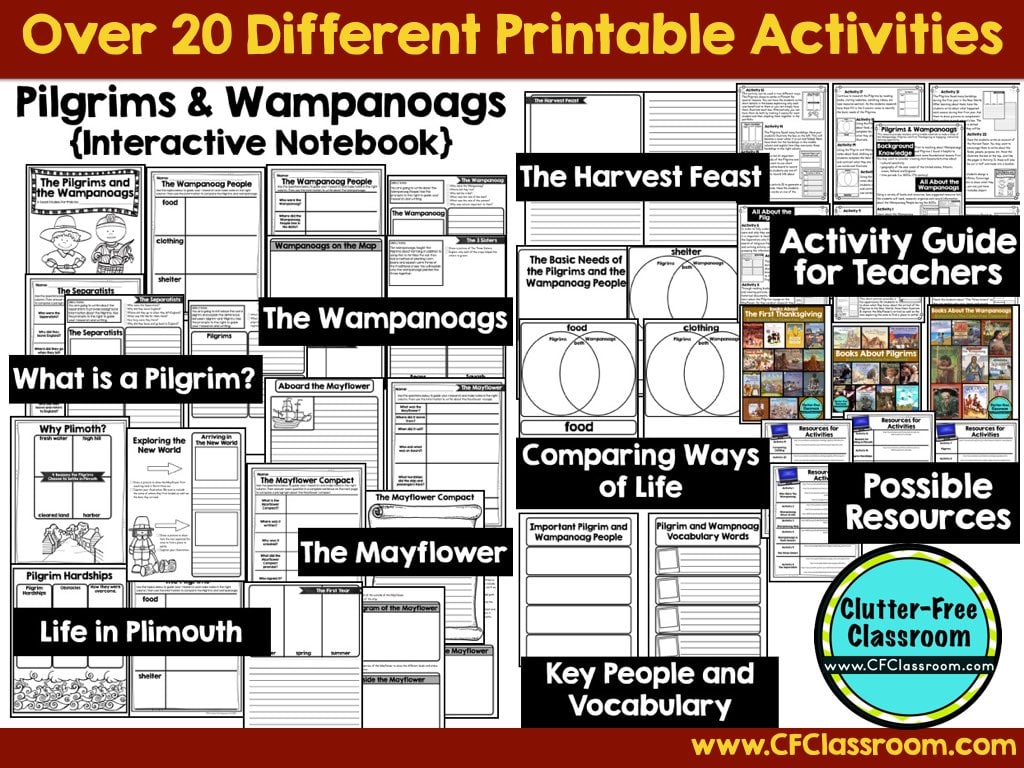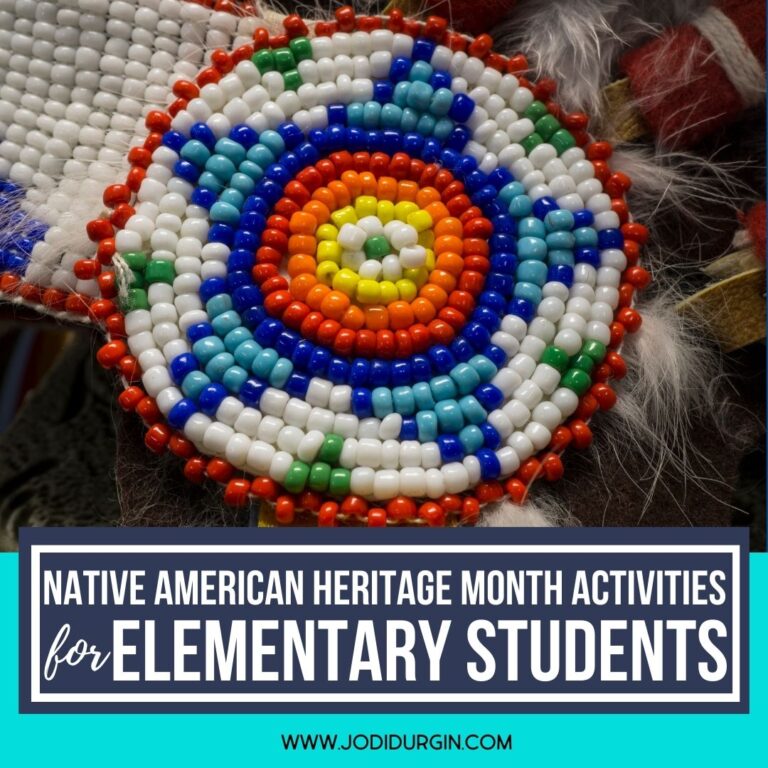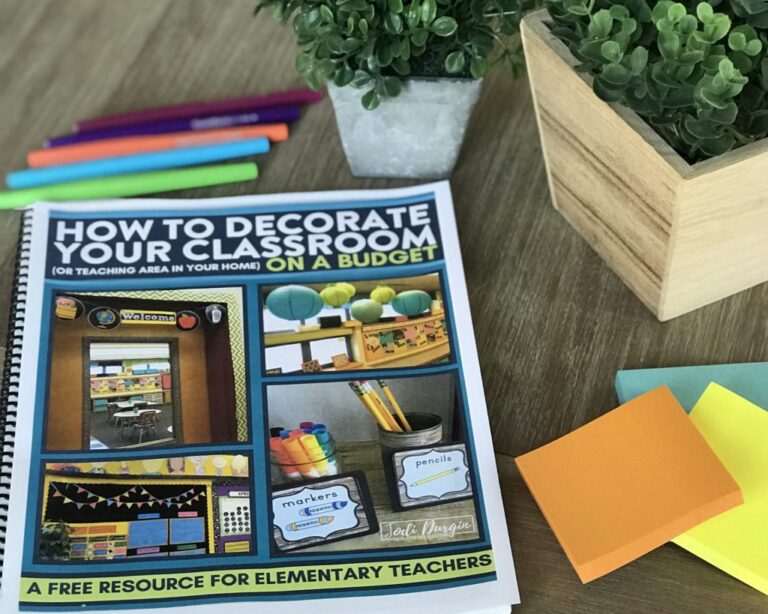November is the perfect time to teach your elementary students about the time in America’s history when the Pilgrims arrived from England and settled in Plimoth Colony. Prior to teaching about the First Thanksgiving, Pilgrims, and Wampanoags, you need to know these first Thanksgiving facts for kids because it’s important that all lessons and activities be historically accurate.
This post will share historically accurate facts, as well as provide 5 teaching ideas you can use in your elementary classroom to teach your students about the First Thanksgiving, Pilgrims, and Wampanoag tribe. Check it all out below!
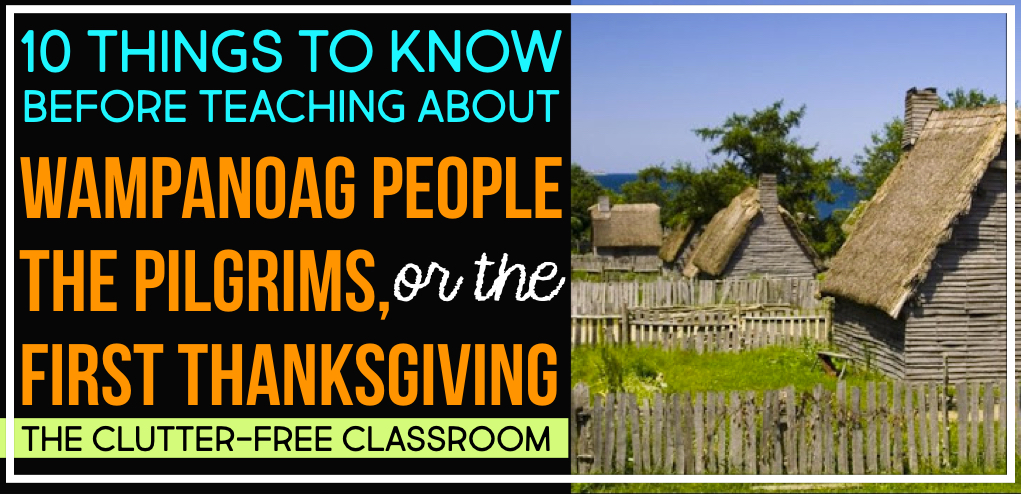
10 Pilgrims, Wampanoag Tribe, and First Thanksgiving Facts for Kids
Below are 10 facts for kids about the First Thanksgiving, Pilgrims, and Wampanoag tribe that are helpful for elementary teachers.
- You may see “Plimoth” spelled different ways. The area the Pilgrims first colonized is now a town called Plymouth, Massachusetts. However, the historical accounts from Governor William Bradford refer to it as Plimoth. When speaking historically it is best to use Plimoth.
- There were no teepees. The Native People associated with the arrival of the Pilgrims are the Wampanoag. They are part of the Eastern Woodland nations. They lived in homes made from branches and bark. In the summer, they lived in smaller dwellings called wetus and in the winter they relocated to larger, shared homes called longhouses.
- The Wampanoag people did not have horses or wear elaborate feather headdresses. Explain to your students that there are many different nations and tribes and that each nation has its own name, language, and culture. Avoid creating headbands with fake, colorful feathers as a class project.
- Do not speak of the Wampanoag only in the past tense. While their way of life has changed, they are still a very culturally active group.
- Avoid the word “squaw.” It was once an Algonquin word meaning “woman,” but the modern meaning is offensive.
- The Pilgrims did not “land on Plymouth Rock.” The Mayflower arrived in the area of Massachusetts that is now known as Cape Cod. They spent several days exploring the area and ultimately settled in the town that is now Plymouth. There is no historical record of Plymouth Rock.
- The purpose of coming to America was not for religious freedom. The Pilgrims first left England and went to Holland where that desire was met. Although they had religious freedom in Holland, they found there were still obstacles. It was hard to make a living and they struggled to maintain their English identity. For those reasons, they chose to sail to the New World.
- The Pilgrims did not leave England to “come to Plimoth.” They were actually sailing to the area of Jamestown, Virginia that had already been colonized. Bad weather and the onset of winter forced them to settle in Plimoth.
- The Pilgrims did not live in log cabins. They built wood clapboard houses made from sawed lumber.
- Turkey was not part of the meal at the first Thanksgiving. Instead, there likely was venison, duck, goose, oysters, lobster, and fish.
5 Teaching Ideas for the First Thanksgiving
There are many great books, videos, and websites for supporting your study of the topic. Unfortunately, many of them include some stereotypes and errors. This is a great opportunity for teaching your children to find those examples as well as contradictions in texts and discuss the historical inaccuracies. Some of the best learning moments in my third grade classroom each year have come from the fact that different sources made different statements about the same topic. It helped them with research throughout the remainder of the school year.
1. Read Alouds
Reading aloud picture books is a great instructional strategy for sharing information about any topic, especially historical ones where it may feel intangible for students. I use a lot of children’s books throughout this social studies unit. Some I read aloud to the class and others I have them use as resources to complete their First Thanksgiving Portfolio Project. I have collected a lot of books on the subject over the years that are packed with First Thanksgiving facts for kids! Below are some of my favorite Thanksgiving read alouds:
- If You Sailed on the Mayflower in 1620
- The Pilgrims’ First Thanksgiving
- If You Were At The First Thanksgiving
- Tapenum’s Day: A Wampanoag Indian Boy In Pilgrim Times
- Samuel Eaton’s Day: A Day in the Life of a Pilgrim Boy
- Sarah Morton’s Day: A Day in the Life of a Pilgrim Girl
- Mayflower 1620: A New Look at a Pilgrim Voyage
- 1621: A New Look at Thanksgiving
- Pilgrims Of Plymouth
- The Wampanoags (True Books: American Indians)
- Life in a Longhouse Village
- A Charlie Brown Thanksgiving
2. Websites and Online Resources
1. The Plimoth Plantation Website
This website is a treasure trove of images and information. This would be great to use with an interactive white board or on individual student computers.
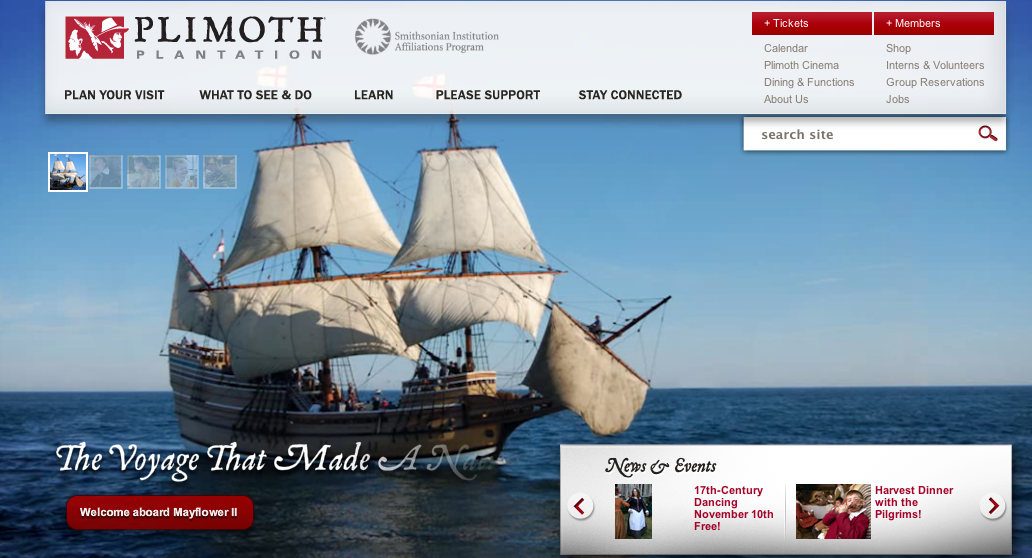 |  |
2. Scholastic Website
You’ll also find wonderful information on the Scholastic Website. It gives students access to tons of First Thanksgiving facts for kids!
3. Field Trip to Plimoth Plantation
Because where I teach is within an hour of Plymouth, Massachusetts, we will often take a field trip to Plimoth Plantation. If you live close to that location, I highly recommend you do that same!
4. Lesson on Stereotypes
It is helpful to open your unit by helping students think critically about stereotypes. Help them understand what they are by listing false stereotypes about Native Americans. Discuss why stereotypes are harmful.
I also found it to be important to talk about cultural sensitivity. They will encounter images of Wampanoag people dressed in traditional summer clothing. A proactive discussion goes a long way. These lessons can be taught during your morning meeting, SEL time, or social studies block.
5. Printable Activities
This is one of my favorite November activities for kids! I’ve taught this unit eight or nine times and it is a topic I always found to be fun to teach. I have students document their understanding as we learn. We do this by assembling lap book learning portfolios or interactive notebooks and recording Pilgrim, Wampanoag, and First Thanksgiving facts for kids in it. The final results really showcased their new knowledge and made an excellent keepsake.
This Pilgrim and Wampanoag lap book can be assembled using only 2 sheets of 12 x 18 construction paper. There is not a lot of cutting, folding or gluing. You can pick and choose which activities you wish to include.
This resource includes a teacher guide, which includes tons of helpful information. For example, it includes links to online sites you can use with your students with each activity. and includes book lists for Pilgrims, the Wampanoag, and the First Thanksgiving. Most importantly, it outlines the sequence in which I taught the unit
In closing, we hope you found these teaching ideas and First Thanksgiving facts for kids helpful! Be sure to check out my Pilgrim and Wampanoag lap book to make planning and prep quick and easy!

